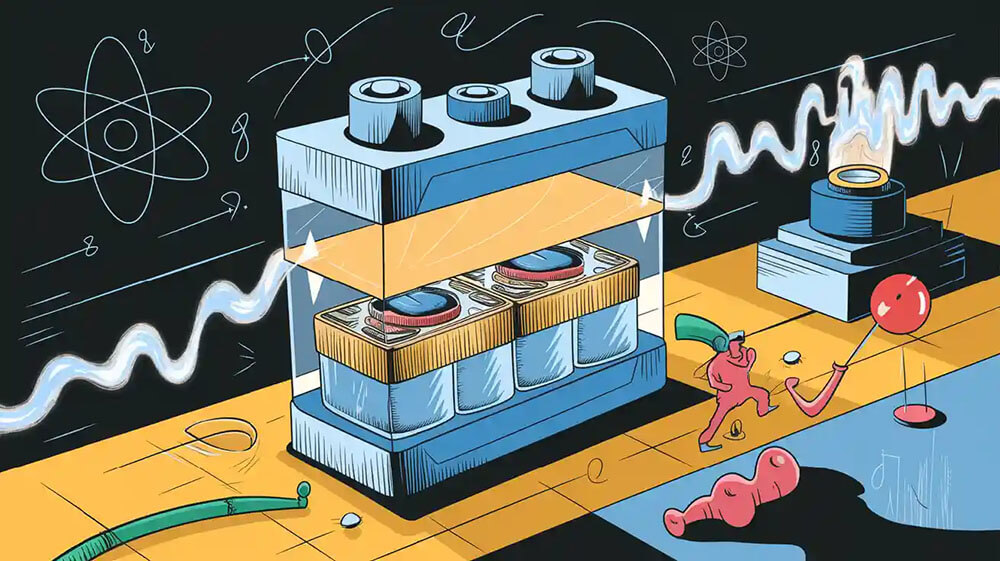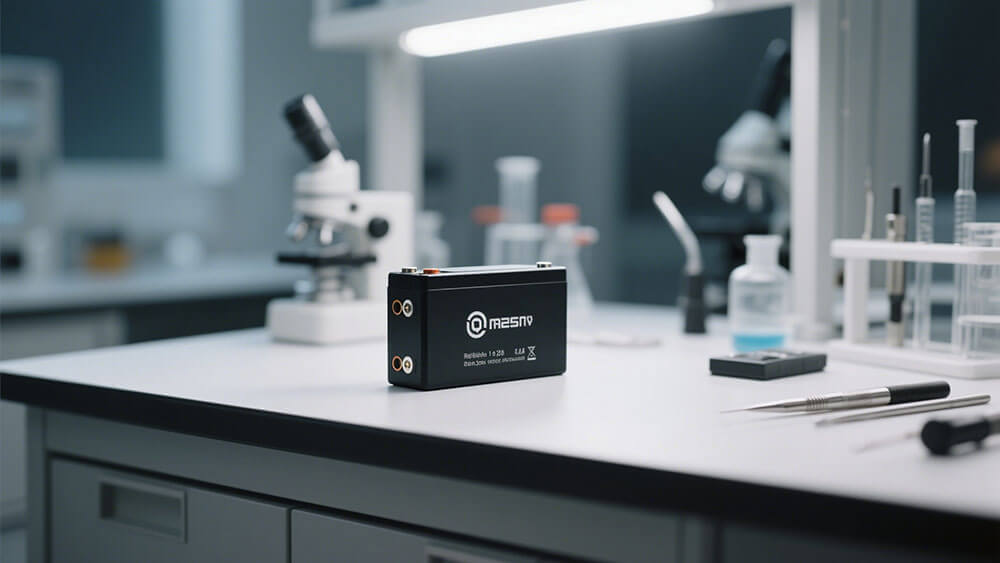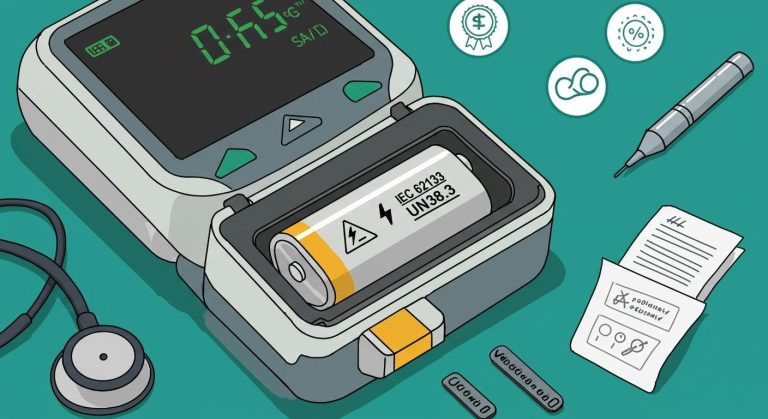
Theoretical energy limits define the maximum energy a lithium-ion battery can store and deliver under ideal conditions. These limits, estimated at 400-500 Wh/kg, surpass today’s practical energy density of 100-270 Wh/kg. For industries like medical devices and consumer electronics, this understanding is vital. It drives innovations that meet energy needs about lithium battery technology while addressing safety and efficiency challenges.
Key Takeaways
Lithium-ion batteries can theoretically store 400-500 Wh/kg of energy. In real life, they only store 100-270 Wh/kg. Knowing why this happens helps create better batteries.
Mixing silicon and carbon makes batteries work better. This mix increases energy storage and keeps the battery stable. It also solves problems like swelling, making it great for heavy use.
Solid-state batteries can store more energy and are safer. They lower dangers like overheating and could change how we store energy. This makes them important for future technology.
Part 1: Understanding Energy Density and Capacity in Lithium-Ion Batteries

1.1 Defining Energy Density and Its Importance
Energy density is a critical metric that determines how much energy a lithium-ion battery can store relative to its weight or volume. It is typically expressed in two forms: gravimetric energy density (measured in Wh/kg) and volumetric energy density (measured in Wh/L). Gravimetric energy density focuses on the energy-to-weight ratio, making it essential for applications like electric vehicles and drones, where minimizing weight is crucial. Volumetric energy density, on the other hand, emphasizes the energy-to-volume ratio, which is vital for compact devices like smartphones and medical implants.
For industries reliant on lithium-ion batteries, achieving higher energy density translates to longer runtimes, reduced charging frequency, and improved device performance. However, the challenge lies in balancing energy density with safety and longevity. For instance, while increasing energy density can enhance performance, it may also elevate the risk of thermal runaway, a phenomenon where the battery overheats and fails catastrophically.
Recent studies analyzing 130 commercial lithium-ion cells highlight the importance of optimizing energy density. Machine learning models used in these studies achieved a root-mean-square error of just 1.1% for predicting energy performance, underscoring the precision of modern analytical tools. These advancements pave the way for designing batteries that push the boundaries of energy density while maintaining safety and reliability.
1.2 The Role of Capacity in Meeting Energy Needs About Lithium Battery Technology
Capacity plays a pivotal role in determining how well a lithium-ion battery meets energy demands. It is categorized into two types:
Capacity Type | Description |
|---|---|
Power Capacity | Maximum instantaneous power output available, measured in megawatts (MW). |
Energy Capacity | Maximum energy that can be stored or discharged during one charge-discharge cycle, measured in megawatthours (MWh). |
Power capacity is crucial for applications requiring high bursts of energy, such as industrial robotics and electric grids. Energy capacity, on the other hand, is vital for devices that need sustained energy over extended periods, such as medical equipment and consumer electronics.
Understanding these capacity types helps you select the right battery for your specific energy needs about lithium battery technology. For example, a battery with high energy capacity is ideal for powering electric vehicles, ensuring they can travel longer distances on a single charge. Conversely, high power capacity is essential for applications like emergency backup systems, where rapid energy delivery is critical.
1.3 Theoretical vs. Practical Energy Density: Bridging the Gap
Theoretical energy density represents the maximum energy a lithium-ion battery can achieve under ideal conditions. For lithium-ion batteries, this value ranges between 400-500 Wh/kg. However, practical energy density, which accounts for real-world constraints like material inefficiencies and thermal management, typically falls between 100-270 Wh/kg.
Bridging this gap requires advancements in material science and engineering. For instance, replacing traditional graphite anodes with silicon-carbon composites can significantly enhance gravimetric energy density. Similarly, high-nickel cathodes are being developed to improve volumetric energy density without compromising safety.
Innovations in battery design also play a crucial role. Solid-state batteries, which replace liquid electrolytes with solid ones, promise to achieve energy densities closer to theoretical limits. These batteries not only offer higher energy density but also improve safety by reducing the risk of leakage and thermal runaway.
As industries continue to demand higher-performing batteries, the focus remains on narrowing the gap between theoretical and practical energy density. This progress will enable you to benefit from more efficient, reliable, and sustainable energy solutions.
Part 2: Material Science Behind Theoretical Limits

2.1 Anode Materials: Graphite and Beyond
Graphite remains the most widely used anode material in lithium-ion batteries due to its stability and reliable electrochemical performance. However, advancements in material science are paving the way for alternatives that can significantly enhance energy density. Low-dimensional carbon materials, such as carbon nanotubes (CNTs), graphene, and carbon quantum dots (CQDs), offer unique advantages. These materials exhibit high specific surface area, excellent electrical conductivity, and superior mechanical strength. For instance, CQDs demonstrate high specific capacity and excellent cycling stability, making them a promising candidate for next-generation anodes.
Silicon-based anodes are another breakthrough in this field. Silicon has a much higher lithium-ion storage capacity compared to graphite, which can dramatically improve gravimetric energy density. However, its significant volume changes during ion insertion and extraction pose challenges to mechanical stability. Researchers are addressing this issue by developing silicon-carbon composites, which combine the high capacity of silicon with the structural stability of carbon.
2.2 Cathode Materials: High-Nickel and Other Innovations
Cathode materials play a critical role in determining the volumetric energy density of lithium-ion batteries. High-nickel cathodes, such as nickel-rich NMC and NCA variants, are at the forefront of innovation. These materials offer higher energy density by reducing cobalt content and increasing nickel content. Companies are now commercializing ultra-high nickel layered oxides with nickel content exceeding 90%, which significantly enhances performance.
Recent studies emphasize the importance of structural engineering and surface modifications in high-nickel cathodes. Tailored coatings stabilize the electrode-electrolyte interface, improving cycling durability and mechanical resilience. Single-crystal nickel-rich cathodes, for example, provide superior stability compared to polycrystalline variants, although challenges like synthesis complexity remain. Innovations such as LMFP and DRX cathodes are also gaining traction, balancing high energy density with cost-effectiveness and sustainability.
2.3 Electrolytes and Their Role in Enhancing Energy Density
Electrolytes are crucial for optimizing the performance and safety of lithium-ion batteries. Recent research highlights the development of fluorinated borate esters, such as tris(2-fluoroethyl) borate (TFEB), which significantly improve battery cycling performance. These advanced electrolytes enhance ion solvation and lithium salt solubility, critical factors for achieving higher energy density.
Solid-state electrolytes represent another transformative innovation. By replacing liquid electrolytes with solid ones, these systems promise to push energy densities closer to theoretical limits while improving safety. Advanced computational methods, including density functional theory, are being used to design electrolytes that maximize compatibility with high-energy materials. These advancements are essential for the next generation of lithium-ion batteries, enabling you to achieve greater efficiency and reliability in energy storage solutions.
Part 3: Advancements in Pushing Energy Limits

3.1 Silicon-Carbon Composites: A Game-Changer for Anodes
Silicon-carbon composites represent a transformative leap in anode technology for lithium-ion batteries. These materials combine the high lithium-ion storage capacity of silicon with the structural stability of carbon, addressing the mechanical challenges posed by silicon’s volume expansion during charge cycles. This innovation enhances both energy density and battery lifespan.
Recent advancements, such as Evonik’s Siridion Black, highlight the potential of silicon-carbon composites. This material features a unique structure with varying carbon concentrations, offering exceptional stability and oxidation resistance. It also improves fast-charging capabilities and energy efficiency, making it ideal for applications requiring high energy density.
Key benefits of silicon-carbon composites:
Enhanced energy density and capacity.
Improved mechanical stability compared to traditional graphite anodes.
Increased efficiency in fast-charging scenarios.
These advancements pave the way for more efficient and reliable lithium-ion batteries, meeting the growing energy demands of industries like robotics and consumer electronics.
3.2 High-Nickel Cathodes: Unlocking Higher Energy Density
High-nickel cathodes are at the forefront of efforts to achieve higher volumetric energy density in lithium-ion batteries. By increasing nickel content and reducing cobalt, these materials offer improved performance and sustainability. Some manufacturers now claim specific energy levels exceeding 400 Wh/kg, with ongoing research targeting 450 Wh/kg.
Structural engineering and surface modifications further enhance the performance of high-nickel cathodes. For example, single-crystal nickel-rich cathodes provide superior stability and cycling durability. These innovations make high-nickel cathodes a cornerstone for applications requiring high energy density, such as electric vehicles and industrial systems.
3.3 Solid-State Batteries: The Future of Lithium-Ion Technology
Solid-state batteries are poised to revolutionize the energy storage landscape. By replacing liquid electrolytes with solid ones, these batteries offer higher energy densities—up to 500 Wh/kg—while improving safety and reducing the risk of thermal runaway.
Key advantages of solid-state batteries:
Extended driving ranges and reduced charging times for electric vehicles.
Enhanced safety due to non-flammable solid electrolytes.
Potential to disrupt up to 40% of current lithium-ion applications by 2030.
However, challenges remain. The complexity of manufacturing processes and the reliance on lithium metal pose hurdles to mass adoption. Current production efficiency for solid-state cells is only 50-60%, compared to 90% for traditional lithium-ion batteries. Despite these obstacles, solid-state technology holds immense promise for the future of energy storage.
For custom battery solutions tailored to your needs, explore Large Power’s offerings.
Understanding the theoretical energy limits of lithium-ion batteries requires examining key factors like material properties, electrode design, and electrolyte performance. Studies, such as those by Doyle et al. and Arora et al., reveal that diffusion limitations in the solution phase and lithium depletion at electrode surfaces significantly impact performance.
Advancements in material science, including silicon-carbon anodes and high-nickel cathodes, are bridging the gap between theoretical and practical energy densities. Solid-state batteries, with their potential for higher energy density and safety, represent a promising future. These innovations address growing energy needs about lithium battery technology, enabling industries to achieve greater efficiency and sustainability.
Future breakthroughs in lithium-ion battery technology will transform industries reliant on battery packs, from robotics to consumer electronics. To explore custom solutions tailored to your specific energy needs, visit Large Power’s offerings.
FAQ
1. What is the theoretical energy density of lithium-ion batteries?
Theoretical energy density for lithium-ion batteries ranges from 400-500 Wh/kg, significantly higher than the current practical range of 150-250 Wh/kg.
2. How do silicon-carbon composites improve battery performance?
Silicon-carbon composites enhance energy density and mechanical stability, addressing silicon’s volume expansion issues during charge cycles.
3. Why are solid-state batteries considered the future of energy storage?
Solid-state batteries offer higher energy density (up to 500 Wh/kg), improved safety, and reduced thermal runaway risks, making them transformative for industries like consumer electronics.
Tip: For custom battery solutions tailored to your needs, explore Large Power’s offerings.






